Successful Case: railway passenger comfort evaluation.
Introduction
Railway vehicles are complex mechanical systems consisting of hundreds of moving components that interact with each other through frictional forces, suspension systems, and unstable operating conditions. A company renewed its passenger car fleet by acquiring European standard models, which it called “modern”. As there were already other types in circulation, there was a need for these modern vehicles to operate with cars from the classic fleet, as well as to determine the comfort level of this composition in operation.
In order to evaluate passenger comfort during railway travel, an international standard establishes the guidelines for evaluating the parameters to which passengers are subjected. These normatively defined criteria must be studied using the accelerometry method.
The passenger car comfort analysis included the evaluation of a complete trip cycle and a trip in the opposite direction of circulation under normal operational conditions. The first cycle occurred with the classic fleet car in the last position and with the modern passenger car, instrumented with accelerometers, in the second-to-last position of the composition, as shown in Figure 1. At the end of the first cycle, the cars swapped positions, as can be seen in Figure 2.


The instrumentation of the cars was performed using accelerometers in 3 directions, as illustrated in Figure 3.
.

For the correct correlation between measured load and strain, the coupler was calibrated on the bench using hydraulic cylinders. Figure 4 shows the installation site of the sensors and the calibration of the coupler.
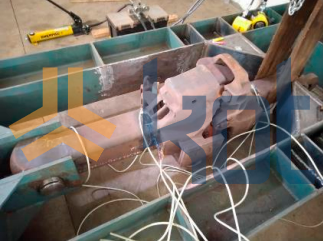
The acquisition system was connected to an on-board computer that recorded the data in a text format file, together with the GPS. The analysis of the results was also based on international standards. The results obtained during the coupler calibration are shown in Figure 5.
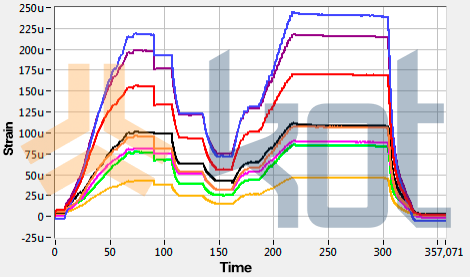
The results obtained during the two cycles are presented graphically. The X-axis corresponds to the time domain, point by point on the railway. Figure 6 in red, in turn, presents the NMV values of the first cycle for the modern passenger car, while the graph in black shows the NMV values for the classic car.
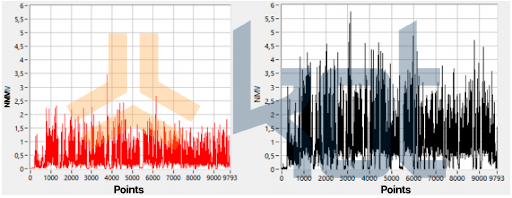
Figure 7, in red, shows the NMV values of the second cycle for the modern passenger car, while the graph in black, the NMV values for the classic car.
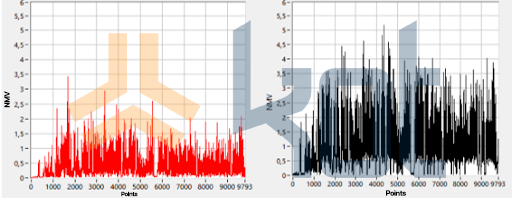
It is possible to observe that the NMV values of the classic car are higher when compared to the modern car in both cycles. By evaluating the results obtained in both cycles and taking 95th (percentile) of these results as reference, we obtain the comfort value, according to the international standard, as shown in Table 1.
Table 1: General Comfort.

Conclusion
The comfort evaluation of the passenger car allowed the obtaintion of the NMV values. The main accelerations that contribute to an increase in discomfort on the modern car are the vertical accelerations. On the other hand, on the classic car, it is the vertical and lateral accelerations. There was no considerable variation in both cycles evaluated, indicating that the comfort levels do not change depending on the position of the cars.
KOT has experience in the area and can help you with your company’s needs. Consult our team of specialists to evaluate the possibilities of application in your context.
Get in touch with KOT’s specialists team!

KOT Engenharia’s Team
With over 29 years of history and various services provided with excellence in the international market, the company promotes the integrity of its clients’ assets and collaborates in solutions to engineering challenges. For this integrity, it uses tools for calculation, inspection, instrumentation and monitoring of structures and equipment.
References:
[1] DYNAMIC BEHAVIOR OF THE EFVM PASSENGER TRAIN WITH DIFFERENT CAR MODELS IN THE COMPOSITION




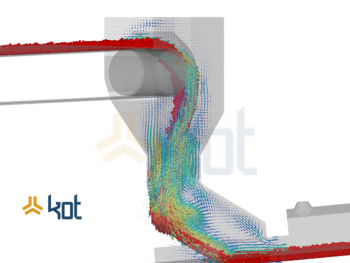

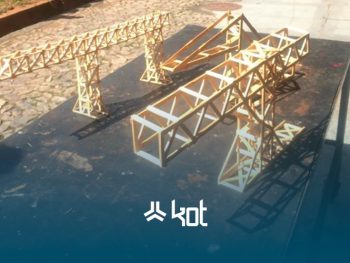
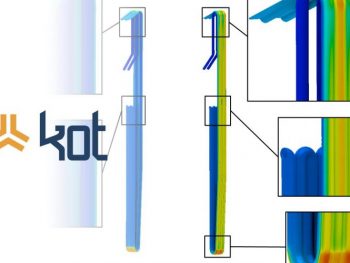


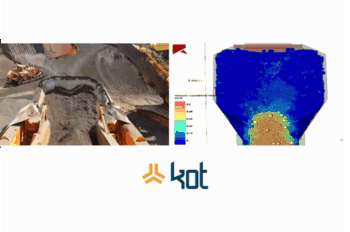
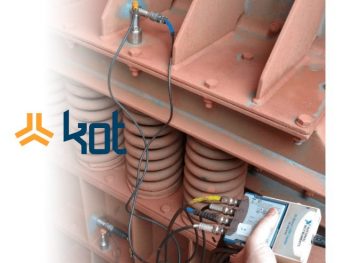
Leave a Reply